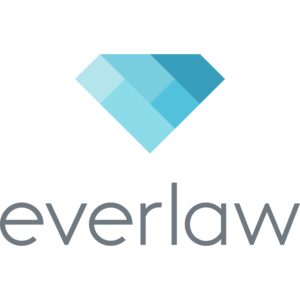There’s no question that advanced technology, and machine learning in particular, has revolutionized the way attorneys handle discovery and trial prep. Few legal tech companies have made greater advances in this area than the folks at Everlaw.
As always, Everlaw is committed to providing attorneys with a quick and easy-to-use experience that allows them to get the most value out of their time, while at the same time ensuring security and understanding the vital importance of keeping confidential data confidential. Everlaw has always kept the end user in mind when developing its tools, and it shows in their latest enhancements and features.
From making core discovery even easier, to implementing more machine learning capabilities, to adding a number of features to ease the burden of managing large eDiscovery projects, Everlaw has been busy making their sophisticated platform better than ever.
Enhancements to Core Discovery Functions
Everlaw shines when it comes to the basics of eDiscovery, perfecting the tasks that lawyers and discovery professionals have been doing for years — uploading files, getting them in useable formats, finding the relevant information within them, and producing them. By incorporating the power of machine learning, Everlaw allows attorneys to create ideal workflows from early document searching and review all the way through trial prep.
Maintaining its focus on simplicity of design, Everlaw has reimagined the way attorneys find relevant information, creating visual results out of intuitive drag-and-drop searches. Searches follow the logic you use to determine the documents you want to see, which makes it easy to craft even complex searches and get quick results.
What really sets Everlaw’s results apart from the competition is its customizable dashboards that offer visualizations of your searches broken down by factors like custodians, dates, coding parameters, or document types.
You can select and order the visualizations you most want to see in order to obtain a quick understanding of any given set of documents with just a glance. From within the visualizations you can run filters or make changes to the documents making up your search set.
Users can also customize their full-screen document review page, choosing what information or tools are most relevant to their workflows for a given matter. Even better, Everlaw has rebuilt its PDF viewer to decrease load time and make it easy to scroll through documents rather than having to click page by page.
Predictive Coding Through Machine Learning
Recognizing that most eDiscovery tasks are still performed by people, Everlaw aims to provide the best tools to help those people get the most out of their review within limited time constraints. This is where machine learning plays a vital role.
It’s often cost-prohibitive to review every single possible document, particularly in complex cases, so Everlaw uses predictive coding derived from models that use active learning to help identify the documents that are most likely to be responsive.
Users don’t need a background in data analytics to effectively use the predictive coding tool. The tool automatically prioritizes documents so users see first the ones that are most likely to be relevant but have not yet been reviewed. Through a combination of statistics that show how well the tool is working in terms of accuracy and how many relevant documents may have been missed due to the thresholds you set, you can determine with confidence whether your review is complete.
In order to approach opposing counsel or the court with that determination, you need the most rigorous statistics possible. That’s why Everlaw has introduced a new Rigorous Mode, which automatically enforces a particular ordering on your document set that requires you to have viewed all the documents necessary to make sound decisions about your review.
Building Your Case
Everlaw continues to offer users the most effective tools for building a case once review is complete. With the game-changing StoryBuilder tool, your team can collaborate to use your documents to tell the best story of your case.
StoryBuilder starts with a chronology and overlays key events, so you can see exactly where your documents fall in relation to those particular events. You can organize your documents, add descriptions, retitle them, and export them to deposition, cross-examination, or other outlines. There’s no easier way to collaborate with colleagues and co-counsel to use your documents to actually argue your case, all in one easy place.
New Features that Make eDiscovery Management Even Easier
Many of Everlaw’s newest developments revolve around the goal of making the management of eDiscovery easier. Particularly for those at larger organizations, coordinating multiple projects and large review teams can quickly become an administrative hassle. Everlaw has introduced a number of new features to help alleviate those burdens and ensure consistency across reviews and teams.
Everlaw’s new administrative view gives users who are managing projects and overseeing teams better tools for all aspects of a review — the ability to manage lists of users and projects, project sizes, and uploads, as well as seeing reviewer activity and access history.
The platform now also includes project templating, which allows administrators to copy settings from previous projects or from pre-set templates when creating the parameters for a new review database. This not only saves time, it ensures consistency from project to project.
What you want to copy is up to you — users, project settings, user groups, permission settings, coding sheets, or production protocols.
With respect to permission settings, Everlaw has overhauled those, too. Administrators now have granular control over the access permissions given to users or groups, allowing them to tailor different permissions for internal employees, contract employees, outside counsel, or even individual users.
Finally, Everlaw has removed one of the major roadblocks to coding consistency by adding new auto-code settings that apply conditional coding based on how certain documents relate to other documents.
Now, administrators can ensure that reviewers code consistently across document families or attachment groups by setting rules that will automatically code all documents in such groups the same way. These auto-coding rules are also an invaluable tool for protecting privilege, as the settings can be used to automatically code duplicate documents as privileged as soon as the first document receives that tag.
Everlaw’s newest features and enhancements are game-changers for clients with large teams and several concurrent matters, including sensitive Data Subject Access Request (DSAR) matters that require quick, accurate, and consistent treatment of PII for GDPR compliance.
Everlaw was already making it easier to handle your eDiscovery and build your case. Now they’ve made it possible to be even more confident in the accuracy, efficiency, and consistency of your review. When you want the most cutting-edge eDiscovery suite on the market, you want Everlaw.
























